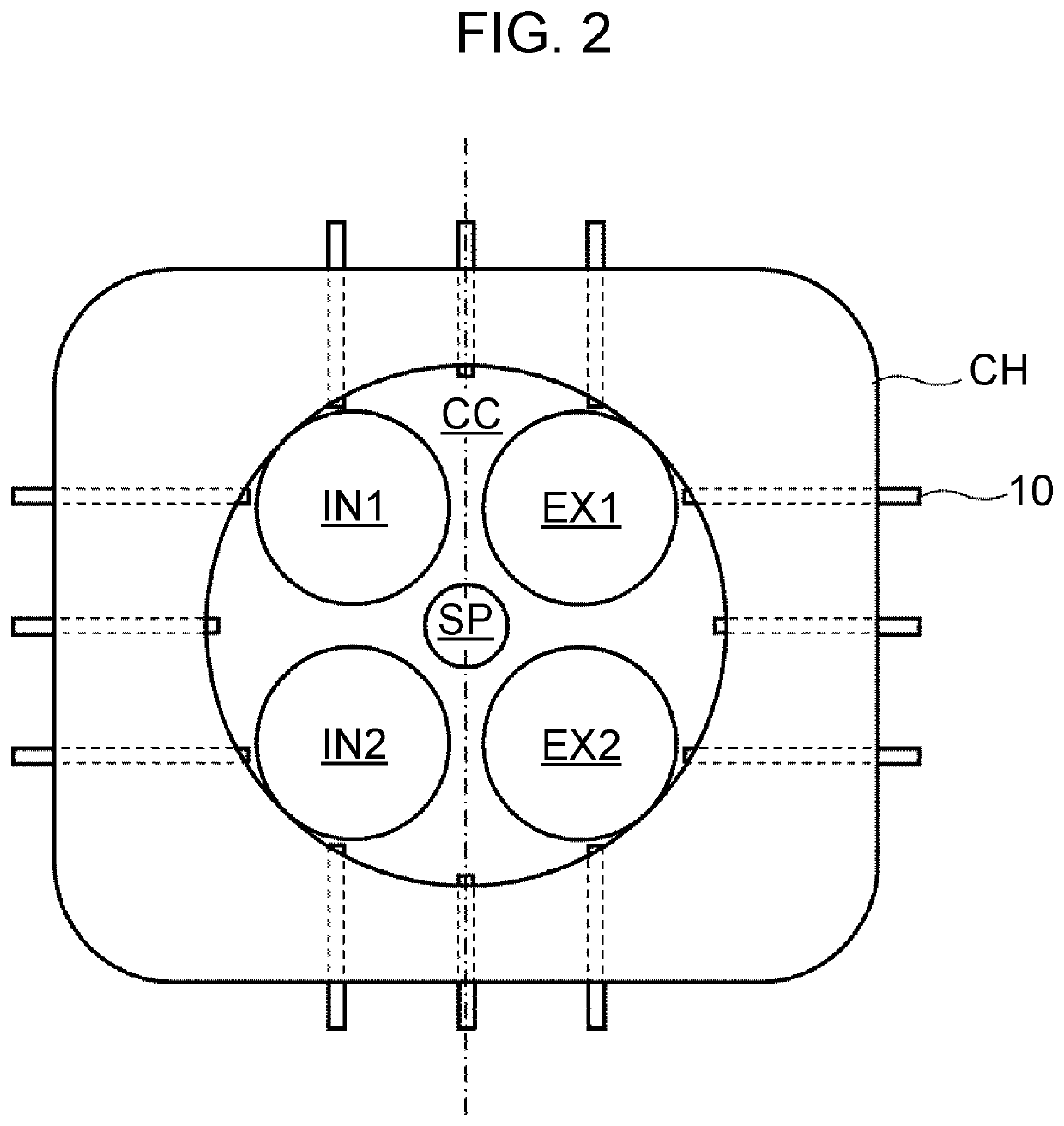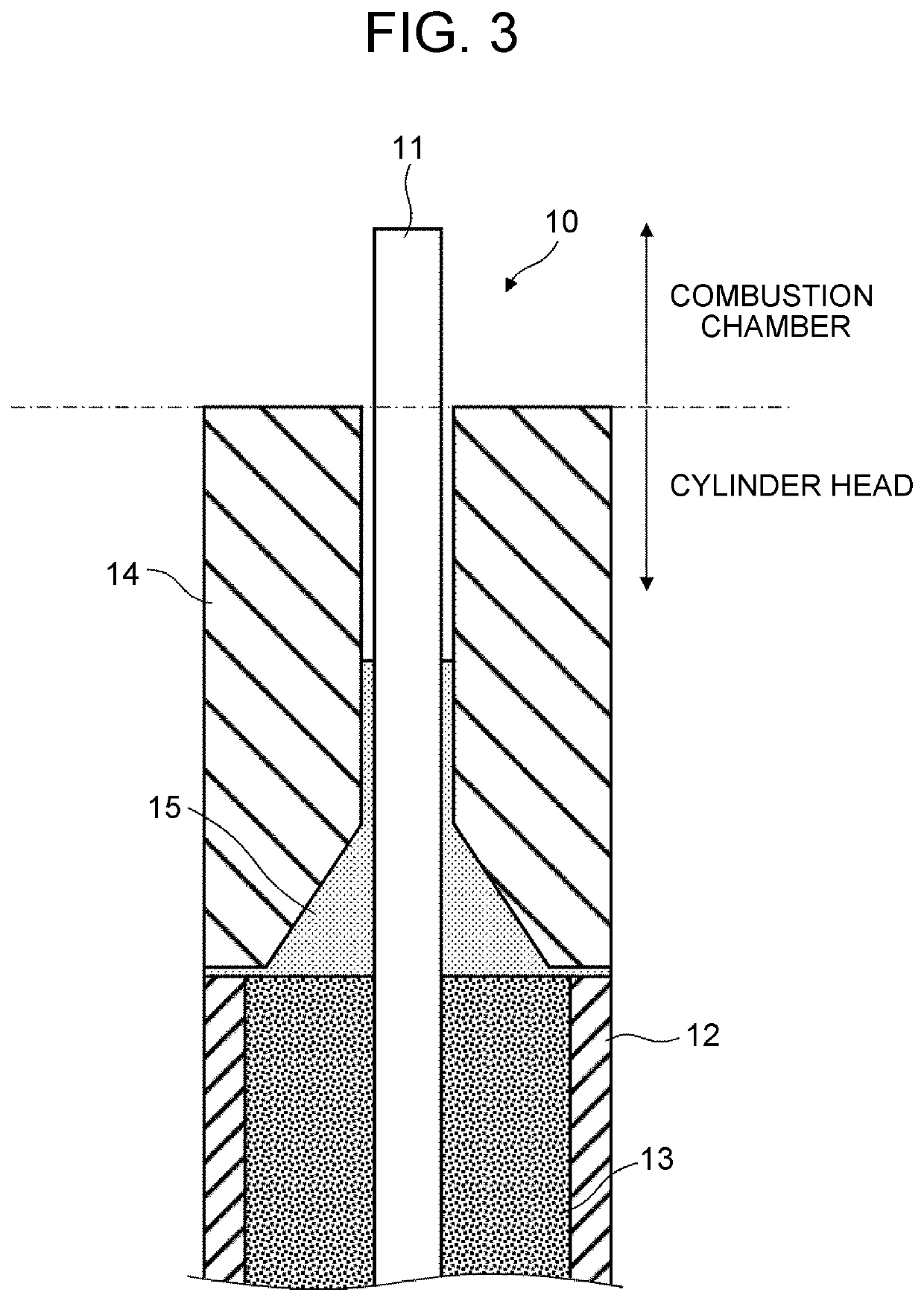Ion probe
a technology of ion probes and probes, applied in the field of ion probes, can solve the problems of reducing the insulation resistance between metal wires, reducing the accuracy of flame detection, and the foregoing problems cannot be effectively resolved, and achieve the effect of reducing the insulation resistan
- Summary
- Abstract
- Description
- Claims
- Application Information
AI Technical Summary
Benefits of technology
Problems solved by technology
Method used
Image
Examples
example embodiment
[0024]Configuration of Flame Detecting System
[0025]First, a flame detecting system including ion probes according to an example embodiment will be described with reference to FIG. 1. FIG. 1 is a circuit diagram of the flame detecting system including the ion probes according to the present embodiment. The flame detecting system illustrated in FIG. 1 is used to detect a flame in a combustion chamber CC of an engine. As illustrated in FIG. 1, the flame detecting system includes ion probes 10, a direct-current (DC) power source DPS, a resistor R1, a resistor R2, a capacitor C, and an output terminal OT.
[0026]As illustrated in FIG. 1, a first end of the DC power source DPS is connected to a first end of the capacitor C via the resistor R1. Further, a second end of the DC power source DPS is connected to a second end of the capacitor C via the resistor R2. That is, the resistor R1, the capacitor C, and the resistor R2 are connected in series between both terminals of the DC power source ...
PUM
| Property | Measurement | Unit |
|---|---|---|
| output voltage | aaaaa | aaaaa |
| output voltage | aaaaa | aaaaa |
| output voltage | aaaaa | aaaaa |
Abstract
Description
Claims
Application Information
 Login to View More
Login to View More - R&D
- Intellectual Property
- Life Sciences
- Materials
- Tech Scout
- Unparalleled Data Quality
- Higher Quality Content
- 60% Fewer Hallucinations
Browse by: Latest US Patents, China's latest patents, Technical Efficacy Thesaurus, Application Domain, Technology Topic, Popular Technical Reports.
© 2025 PatSnap. All rights reserved.Legal|Privacy policy|Modern Slavery Act Transparency Statement|Sitemap|About US| Contact US: help@patsnap.com



